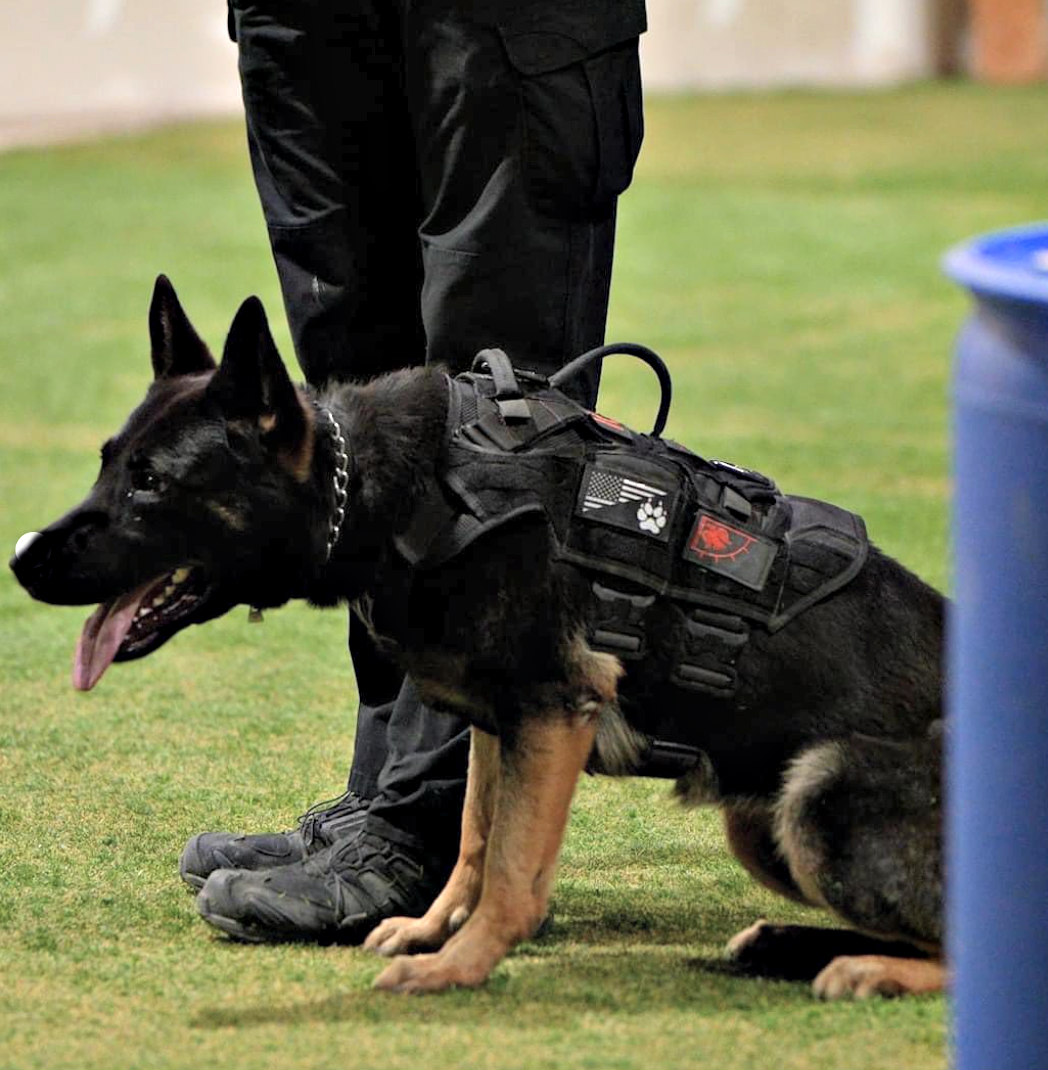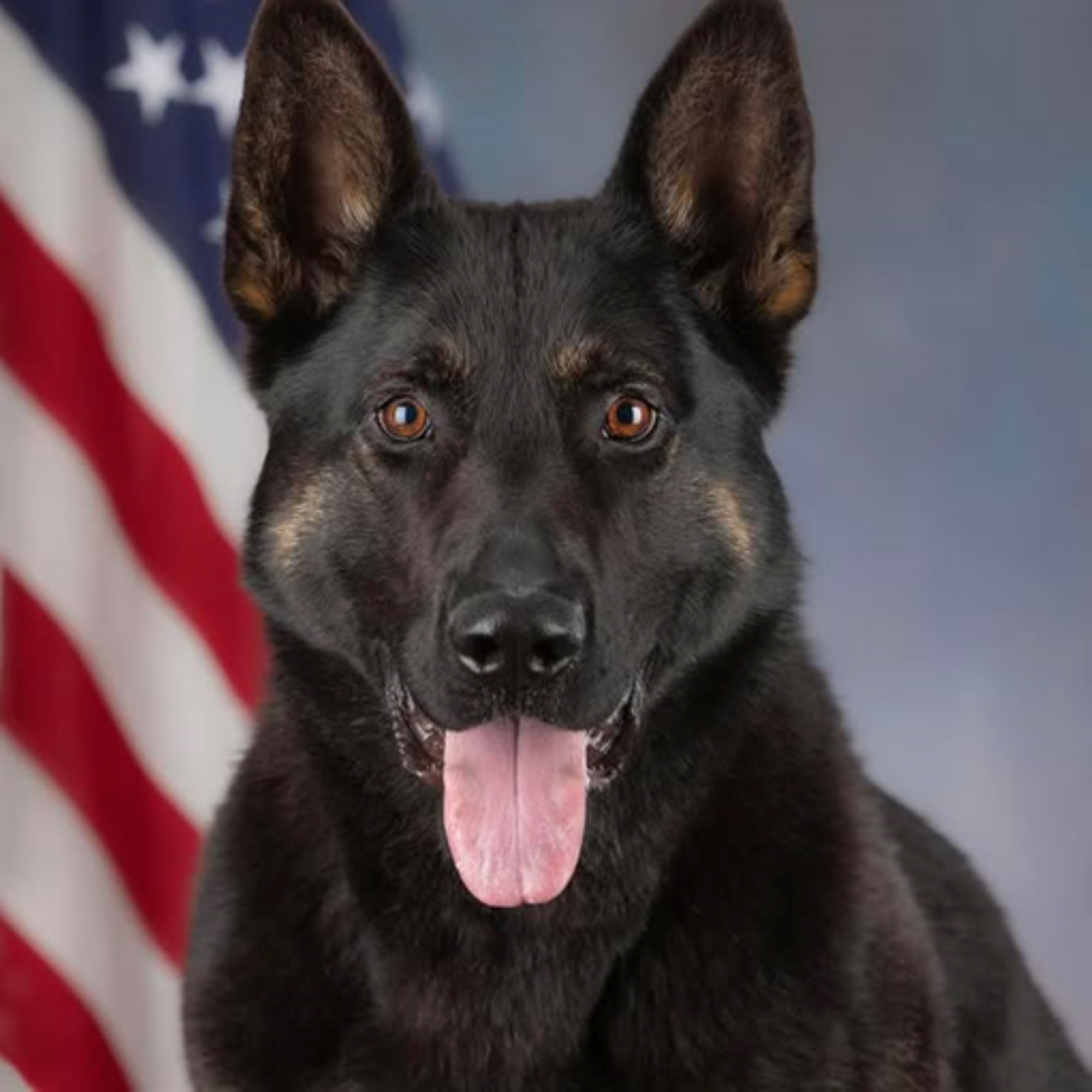Story by Rebecca West
Images courtesy of TPD Service Dog Unit
As some of you may recall, in October of 2023, a K-9 with the Tucson Police Department was shot while responding to a call involving an armed man at Reid Park suffering from an emotional health crisis. While mental health professionals attempted to de-escalate the situation over the phone, TPD officers rushed to the park to find the man and ordered him to drop his weapon.
During protracted negotiations, the individual suddenly dashed to an exposed area of the park where he began to open fire, shooting police dog Raven in the process. Three of the officers on scene returned fire, wounding the man before he was taken into custody and transported to the hospital. Raven, a 3-year-old male German shepherd who began his career with the TPD just a few months earlier, was simultaneously rushed to the VCA Valley Animal Hospital and Emergency Center with life-threatening injuries.
TPD noted at the time that the VCA Valley Animal Hospital team worked tirelessly to perform life-saving surgery on him. After learning that he was in stable condition, they gratefully added in a statement, “Thanks to the incredible work by Dr. Chirco, Dr. Perino, Dr. Chauvet, Dr. Saulnier-Boyd, Dr. Pashaian and techs Andrea, Cassidy, Bailey, Maddie, Diana, Emily, Gemma, Cait, Ro, Jessy, Autumn, and Perla, Raven was able to survive his injuries.”
But Raven had a long way to go in regaining his health and ultimately passed away on July 5, 2025, as a result of his injuries. We were able to speak to Sgt. Richard Legarra about the incident and learn a little more about Raven, the K-9 unit in general, and the vests the dogs wear while working. Legarra, who’s been the head of the unit just shy of two years, is also a SWAT team leader and was there the night Raven was shot.
Raven was one of eight K-9s with the Tucson Police Department at the time of the shooting. Currently, there are nine dogs. Only three breeds are selected for use in the program. They are Belgian Malinois, German shepherds, and Dutch shepherds. They receive constant training from day one and throughout their careers with the TPD K-9 Unit, but a minimum of eight weeks of training is required before they begin duty. The animals live with their handlers and are generally assigned to them for the length of their careers.

Raven came from Adlerhorst International LLC, a provider of police service dogs and canine training to law enforcement agencies worldwide.
The person who shot Raven took a plea agreement and was held accountable for interfering with a police dog. Oddly enough, they are not considered law enforcement personnel in the court system but working dogs, so the penalties are not the same as shooting an officer. Since it is no longer an open case, no further charges will be brought against the defendant in connection with Raven’s death more than two years ago.
A memorial service was held on August 5 of this year at the police academy located on Wilmot Road. A private affair, members of the Service Dog Unit and their immediate families were in attendance, as well as members of the executive leadership team and the department’s SWAT team, along with some additional K-9 handlers from other agencies who were invited.
Around the same time, it was announced on social media that the department was the recipient of new ballistic vests, saying, “The Service Dog Unit would like to thank The Alvernon-Grant Initiative (AGI) for their generous donation that helped purchase two new custom ballistic vests. Their donation will help keep K-9 Ranger and K-9 Hondo safe. Both have been outfitted with K-9 Storm Inc. ballistic vests. All of our K-9s wear ballistic protection while working.”
Legarra informed us that vests are custom-made for each dog and that they can’t order a vest until the animal is 2 years old because they generally aren’t finished growing until then. As you’re likely wondering, Raven, being a new dog with the department, hadn’t received their vest yet.
Curious, we asked about the efficacy of the vests for dogs as compared to humans. In other words, are they as efficient and reliable as vests for their two-legged counterparts, considering the materials used? The answer is that dog vests are rated for handgun caliber while human vests are rated for rifle caliber, which has a more powerful impact. The reason for this is that the materials used for humans are far too heavy and bulky to work with the slight frame of a dog.
On a final note, Sgt. Legarra wanted to note: “These dogs are absolutely amazing. On more than one occasion, a dog has saved my life. We are indebted to them and we take care of them accordingly, both during their working career and after. They are incredible animals who deserve the best.”











